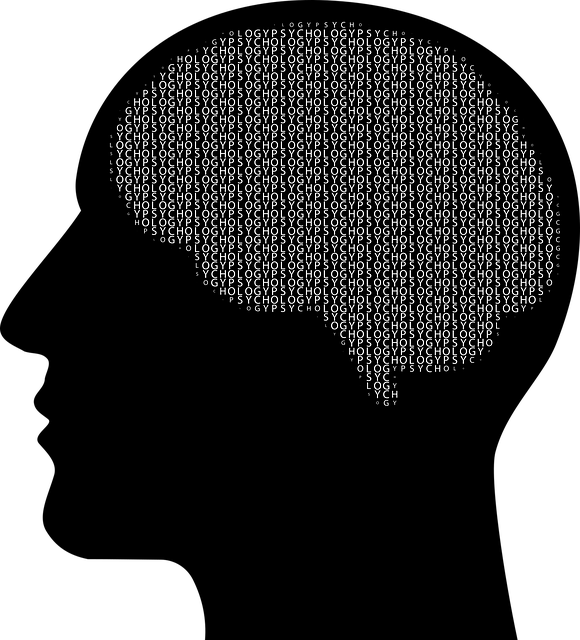Cognitive Behavioral Therapy: Empowering Young Minds with Positive Thinking
Cognitive Behavioral Therapy (CBT) is an effective tool for promoting mental well-being in young chi…….
In the realm of child mental health, Therapy for Young Children Cognitive Behavioral Therapy (CBT) stands as a powerful and evidence-based approach designed to address a wide array of emotional and behavioral challenges. CBT is a structured form of psychotherapy that helps children identify and change negative thought patterns and behaviors, fostering resilience and improved functioning. This article aims to provide an in-depth exploration of CBT for young children, covering its foundations, global reach, economic implications, technological innovations, regulatory framework, challenges, real-world applications, and future prospects. By delving into these aspects, we will uncover the significance of CBT in shaping the well-being of children worldwide.
Cognitive Behavioral Therapy for young children is a therapeutic intervention that focuses on identifying and modifying maladaptive thought patterns, emotions, and behaviors in children aged 3 to 12. CBT is based on the premise that our thoughts, feelings, and actions are interconnected, and by changing one’s thinking (cognition), one can influence their emotional response and subsequent behavior.
The core components of CBT include:
Cognitive Restructuring: Helping children identify and challenge negative or distorted thoughts and beliefs, replacing them with more realistic and adaptive ones.
Behavioral Activation: Encouraging positive behaviors by setting achievable goals, providing rewards, and reinforcing desired actions.
Coping Skills Training: Teaching children various coping strategies to manage stress, anxiety, and challenging emotions effectively.
CBT has its roots in behavioral therapy, which emerged in the early 20th century with pioneers like John B. Watson and B.F. Skinner. However, its modern application in child psychology gained significant momentum in the late 1960s and 1970s. Aaron T. Beck, considered the founder of CBT, recognized that children’s problems were often rooted in their unique way of thinking about themselves and the world, leading to the development of this therapeutic approach tailored for younger populations.
CBT is widely recognized as an effective treatment for various childhood disorders, including anxiety, depression, post-traumatic stress disorder (PTSD), obsessive-compulsive disorder (OCD), and attention-deficit/hyperactivity disorder (ADHD). Its success lies in its ability to:
CBT is often used as a standalone treatment or in conjunction with other therapeutic modalities to offer comprehensive care for complex cases.
The impact of CBT for young children extends far beyond its origins, with widespread adoption and adaptation across the globe. According to a 2021 report by the World Health Organization (WHO), mental health disorders among adolescents (aged 10-19) have been rising globally, emphasizing the need for accessible and effective interventions like CBT. Many countries have integrated CBT into their national healthcare systems, recognizing its potential to prevent and manage childhood mental health issues.
North America: The United States and Canada have seen a significant rise in CBT usage, with numerous specialized centers offering this therapy. Research suggests that CBT is effectively reducing symptoms of anxiety and depression in children and adolescents.
Europe: In countries like the UK, Germany, and France, CBT is well-established and often recommended as a first-line treatment for various childhood mental health disorders. The European Association for Children and Adolescents (EACA) has played a crucial role in promoting CBT across the continent.
Asia: Countries in Asia, such as Japan, South Korea, and India, are increasingly incorporating CBT into their healthcare systems. Cultural adaptations of CBT are being developed to suit diverse Asian populations, ensuring cultural sensitivity and effectiveness.
Low-and Middle-Income Countries: The World Bank and other international organizations have initiated programs to enhance access to mental health services, including CBT, in these countries. Local therapists are trained to deliver culturally adapted versions of CBT to address the unique challenges faced by diverse communities worldwide.
The global CBT market for young children is experiencing growth due to increasing awareness of childhood mental health issues and rising healthcare expenditure. According to a 2022 report by Market Research Future (MRFR), the global CBT market size was valued at USD 1.5 billion in 2020 and is projected to reach USD 3.2 billion by 2027, growing at a CAGR of 12.5%. This growth is attributed to rising demand for effective childhood mental health treatments, advancements in technology, and increasing government support.
Private insurance companies, healthcare providers, and public funding bodies are investing in CBT programs due to their demonstrated effectiveness and cost-efficiency. Many organizations offer grants and subsidies to promote access to CBT, especially in underserved communities. For instance, the U.S.-based Substance Abuse and Mental Health Services Administration (SAMHSA) funds various initiatives aimed at increasing CBT availability for children and adolescents.
CBT offers significant economic benefits by reducing long-term healthcare costs associated with untreated mental health disorders. By effectively managing and preventing these conditions, CBT can lead to:
One of the most significant technological innovations in CBT is the development of digital platforms and mobile applications. These tools offer accessible, interactive, and engaging ways for children to receive therapy:
Digital tools in CBT have shown promising results in improving treatment adherence, engagement, and outcomes, particularly for children who may find traditional face-to-face therapy daunting or inconvenient. These technologies are expected to play a more significant role in the future, offering:
The delivery of CBT for young children is influenced by various policies and regulations worldwide, which dictate training requirements, practice standards, and reimbursement policies:
Policies and regulations play a critical role in shaping the development and delivery of CBT:
Access to Qualified Therapists: One of the primary challenges is the limited number of trained CBT therapists, especially in rural or underserved areas. This shortage can result in long wait times for families seeking therapy.
Cost and Reimbursement Issues: Despite its cost-effectiveness, CBT may be financially out of reach for some families due to copays, co-insurance, or lack of insurance coverage. This barrier can prevent children from receiving the necessary care.
Stigma and Awareness: Mental health stigma remains a significant challenge, often discouraging parents and caregivers from seeking CBT for their children. Increased awareness campaigns are needed to promote understanding and reduce barriers to therapy.
Criticism: CBT is sometimes criticized for being too focused on the present and not addressing underlying causes of distress.
Solution: While CBT emphasizes immediate coping strategies, it also incorporates exploration of past experiences and beliefs that might contribute to current issues. Integrating other therapeutic approaches, such as psychodynamic therapy, can provide a more comprehensive treatment.
Criticism: Some argue that CBT may not be suitable for all children, especially those with severe or complex presentations.
Solution: Individualized treatment plans that consider each child’s unique needs are essential. CBT can be adapted and combined with other interventions to cater to diverse populations and severity levels.
Addressing Stigma: To combat stigma, educational initiatives targeting schools, healthcare providers, and the general public are crucial. Normalizing conversations about mental health and advocating for early intervention can help reduce the stigma surrounding CBT and childhood mental health issues.
Setting: A primary school in a suburban U.S. community identified an increasing number of students struggling with anxiety and social skills challenges.
Intervention: The school administration, in collaboration with mental health professionals, implemented a school-based CBT program tailored to the needs of young children. This involved training teachers to recognize and support students’ emotional well-being and providing individual and group therapy sessions.
Outcomes: After one year, the school witnessed a significant reduction in referrals to the school counselor’s office for anxiety-related issues. Students demonstrated improved social interactions, better concentration in class, and enhanced problem-solving abilities. Teachers reported increased classroom management and a more positive learning environment.
Context: In Japan, traditional cultural beliefs often interfere with help-seeking behaviors for mental health issues. A team of therapists and researchers developed a culturally adapted CBT program to address this challenge.
Approach: The adaptation process involved translating CBT materials into Japanese, incorporating local folk stories and imagery, and training therapists in the cultural nuances of the target population.
Results: The cultural CBT program was successfully implemented in several communities, leading to improved access to mental health services for children and their families. Initial outcomes showed reduced symptoms of anxiety and depression, with participants expressing higher satisfaction with the therapeutic process.
Integrative Approaches: The future of CBT may lie in integrating it with other therapeutic modalities, such as mindfulness, neurofeedback, or art therapy, to offer more comprehensive and personalized treatments.
Digital Revolution: As technology advances, digital CBT platforms are expected to become even more sophisticated, providing interactive, engaging, and evidence-based interventions accessible worldwide.
Cultural Sensitivity: Continued efforts to culturally adapt CBT will ensure its effectiveness across diverse populations, promoting broader acceptance and accessibility.
AI Integration: Artificial Intelligence will play a more significant role in CBT, offering personalized treatment plans, intelligent assessment tools, and adaptive therapy sessions tailored to individual progress.
Telehealth Expansion: The COVID-19 pandemic accelerated the adoption of telehealth, and this trend is expected to continue, enabling even more children to access CBT from remote areas.
Preventive Measures: There will be a greater emphasis on preventive interventions, with schools and communities adopting CBT strategies to promote mental well-being and reduce the onset of childhood mental health disorders.
Therapy for Young Children Cognitive Behavioral Therapy represents a powerful tool in the field of child mental health, offering structured, evidence-based interventions that have proven effective across diverse populations worldwide. Its global impact is evident in the increasing adoption and adaptation of CBT, reflecting its potential to address rising childhood mental health challenges. By navigating economic considerations, embracing technological advancements, and addressing critical challenges, CBT continues to evolve and shape the well-being of children globally. As research and practice advance, CBT will undoubtedly play an even more significant role in fostering healthy, resilient, and productive young minds.
Q: Is CBT suitable for all ages?
A: While CBT is primarily used for children aged 3-12, variations of this therapy are adapted for adolescents and adults as well, with some techniques being universally applicable.
Q: How long does CBT typically last?
A: The duration of CBT varies depending on the child’s specific needs and the severity of their condition. Typically, it can range from 10-20 sessions, but some children may require more or less time.
Q: Can CBT be done online?
A: Absolutely! Online therapy platforms and video conferencing tools have made CBT more accessible, allowing children to receive therapy remotely.
Q: Is CBT covered by insurance?
A: Insurance coverage varies. Some plans fully cover CBT, while others may have copays or co-insurance requirements. Check with your insurance provider for specific details.
Q: How do I know if my child needs CBT?
A: If your child exhibits persistent fears, anxiety, mood swings, difficulty concentrating, or other behavioral changes that interfere with daily life, they might benefit from CBT. Consult a qualified mental health professional for an assessment.

Cognitive Behavioral Therapy (CBT) is an effective tool for promoting mental well-being in young chi…….

Developing coping skills through Cognitive Behavioral Therapy (CBT) is crucial for young children�…….